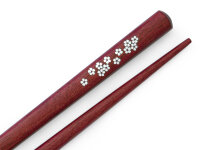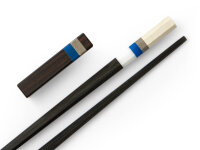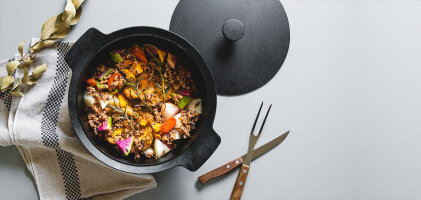Mochi - Traditional Rice Cakes from Japan

Mochi or Daifuku Mochi refers to delicious small rice cakes, with Daifuku being a variant filled with sweet Anko. They are traditionally consumed during New Year and, when unfilled, served in a savory soup. Of course, Mochi is enjoyed throughout the year in Japan, leading to an incredible variety of tasty recipes. Daifuku Mochi can be filled with fruits, green tea, or even ice cream. The following post illustrates how the dough and filling are traditionally or modernly prepared and lists some of the most delicious Mochi recipes.
A mixture of glutinous rice and water - the basis for good mochi
 6 portionsNo. of persons
6 portionsNo. of persons
 ca. 30 minutesTotal Time
ca. 30 minutesTotal Time
 easyLevel of difficulty
easyLevel of difficulty
 DessertDish
DessertDish
 ca. 300kcal per portionCalories
ca. 300kcal per portionCalories
 Vegan
Vegan
 Gluten-free
Gluten-free
 Lactose-free
Lactose-free
 Kitchenware
Kitchenware

|
200g
glutinous rice flour
|
|
150ml
water
|
|
80g
sugar (only for filled Daifuku Mochi)
|
|
potato starch
|
|
food coloring as required
|

Recipe for the filling from Anko
Traditionally, sweet Japanese rice cakes are filled with a mixture of Anko and sugar. This mixture is also called "Japanese marzipan" and can be easily made at home.
|
200g
Red beans (Japanese adzuki beans)
|
|
200g
sugar
|
|
water
|
Recipe 1: traditional daifuku
For traditional Mochi in the form of Daifuku, the dough and bean filling are prepared in Japan as described in the recipe above. They pair excellently with a cup of green tea or as a dessert with sushi.
Recipe 2: Ichigo Daifuku with strawberries
In this Japanese recipe, the Mochi rice cakes are filled with whole strawberries. Wash and clean the strawberries beforehand. In the small cavity under the cut stem, you can fill it with some Anko paste. The strawberries are completely wrapped in the sticky rice dough. They pair well with ice cream, mint leaves, or a fine fruit puree.

Recipe 3: Matcha - Mochi
For Matcha Mochi, simply add a teaspoon of Matcha powder to the dough from the basic recipe. They can be prepared with or without bean filling, sweet, or more savory.
Recipe 4: Rice cake with ice cream filling
Mochi ice cream is a modern food trend that allows for a lot of experimentation. The rice cake dough is made as in the basic recipe. It is filled with ready-made ice cream and then quickly placed in the freezer for about 2 hours. After that, you can enjoy the delicious mochi ice cream anytime and combine it with fruits or other treats.
Recipe for Sakura Mochi - Homage to the cherry blossom
 3 personsNo. of persons
3 personsNo. of persons
 ca. 30 minutes Preparation time
ca. 30 minutes Preparation time
 ca. 15 minutes and 1 hour resting timeTotal Time
ca. 15 minutes and 1 hour resting timeTotal Time
 middleLevel of difficulty
middleLevel of difficulty
 DessertDish
DessertDish
 ca. 350kcal per portionCalories
ca. 350kcal per portionCalories
 Vegan
Vegan
 Vegetarian
Vegetarian
 Gluten-free
Gluten-free
 Lactose-free
Lactose-free
 Kitchenware
Kitchenware
|
100g
rice flour
|
|
100g
glutinous rice flour
|
|
100g
sugar
|
|
175ml
water
|
|
1 tsp
matcha
|
|
5 drops
japanese sakura essence (cherry blossom essence)
|
|
12
small bamboo skewers
|
|
red food coloring
|

Buying ready-made Daifuku Mochi - where to buy?
Ready-made mochi can be purchased at many Asian stores. They are available either pre-packaged in a kind of praline packaging or as frozen goods. The unfrozen mochi doesn't taste quite as good; they are a bit firmer than freshly prepared or frozen rice cakes.
When thawing frozen mochi, be careful not to let them become sticky. It's best to take them completely out of the package while still frozen and place them on a plate or a silicone mat. Allow them to thaw slowly in the refrigerator or a bit faster at room temperature. When thawing in the microwave, proceed with caution, choosing a very low power setting with a short time. Once they are soft, serve them as soon as possible; otherwise, the rice cakes will absorb moisture from the environment and become sticky.
Serving suggestions and suitable combinations
Depending on the recipe, mochi can be filled with anko paste, fruits, or other delicacies and are roughly the size of a flattened golf ball. They pair excellently as a dessert with sushi or other Japanese menus. However, these delicious Japanese rice cakes can also be served instead of cake with coffee (or, of course, afternoon tea).
The cakes can be cut into bite-sized pieces for serving. You can sprinkle them with powdered sugar, cocoa powder, or a touch of matcha powder. Fresh fruits, herbs like mint, or a scoop of ice cream go well with them. Compote, whipped cream, yogurt, or quark can also complement the rice cakes - just experiment and create new combinations! Good luck and enjoy your meal!




























-from-the-yakiyaki-grill-pan.jpg)




